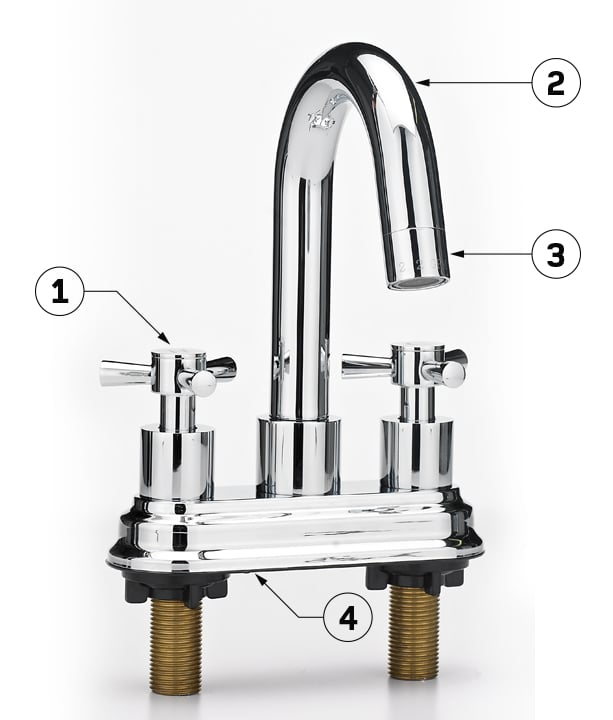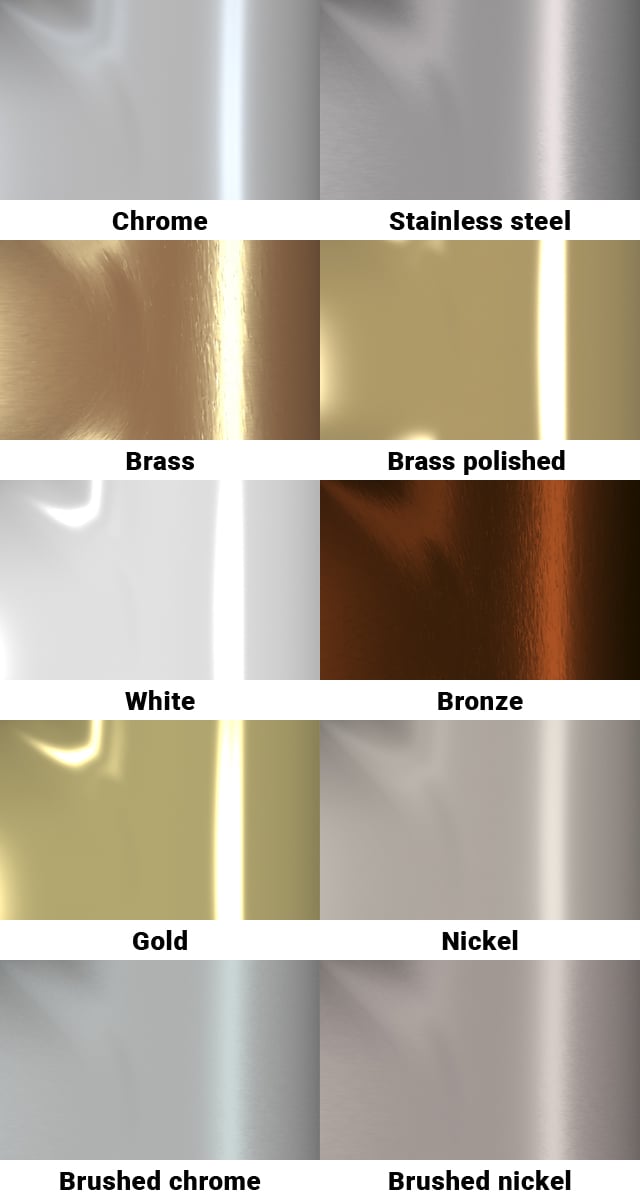How a faucet works
Faucets are valves that deliver water to a sink, washbasin or bathtub. They mix hot and cold water in one of two ways.
- Single-handle (also called single-lever or single-control) faucets have garnered a large share of the market in recent years. Water flow and water temperature are controlled by moving the single lever handle up and down, and to the left and right, respectively. This type of faucet is ideal for anyone with reduced grip or physical disabilities, since the water volume and temperature can be controlled easily with one hand.
- Two-handle faucets have two separate handles – one for hot water and one for cold water – and a common spout. This type of faucet allows for accurate adjustment.
A valve mechanism inside the faucet controls the hot and cold water flow. This mechanism can take the form of a compression washer, a washerless cartridge (reliable and easy to maintain), or ceramic discs (requiring virtually no maintenance).



















